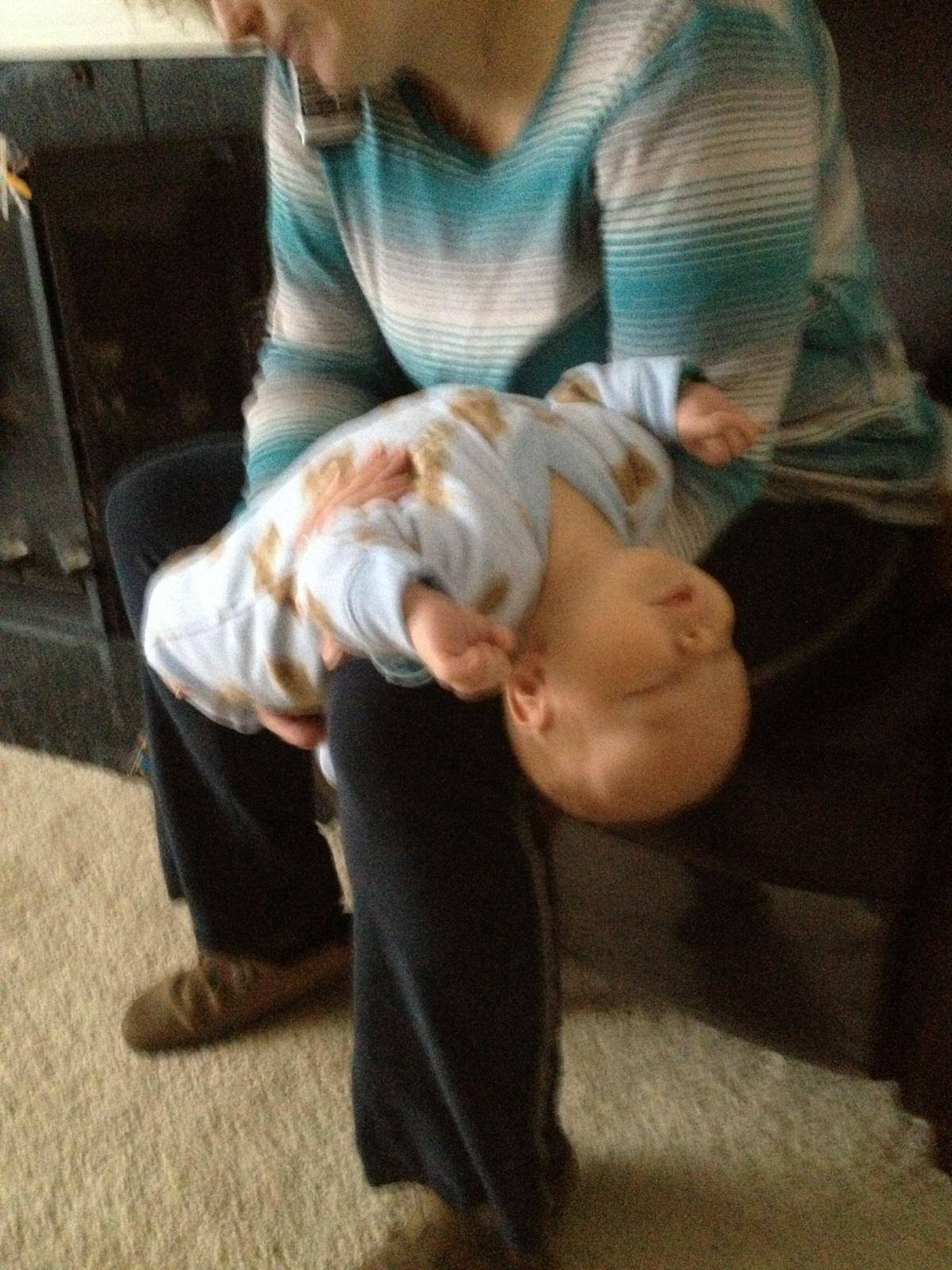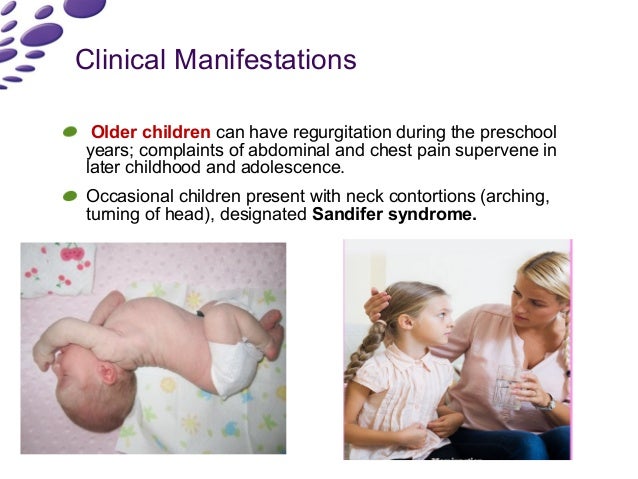Sandifer Syndrome In Infants
Sandifer syndrome in infants. Sandifer syndrome a rare disorder that usually affects children up to the ages of 18 to 24 months. Out of 65 children with Sandifers syndrome described in literature only 2 were breast-fed. Abnormal movement of the head neck and upper part of the trunk are other simultaneous symptoms found in this syndrome.
It is hypothesised that the positioning of the head provides relief from abdominal discomfort caused by acid reflux. Sandifer syndrome is a rare gastrointestinal problem associated with gastroesophageal reflux GER in children. It results in strange neck movements that look similar to a seizure.
Sandifer syndrome is a paroxysmal dystonic movement disorder occurring in association with gastro-oesophageal reflux and in some cases hiatal hernia. Sandifers syndrome is a disorder of the upper gastrointestinal tract with neurological manifestations. Sandifer syndrome or Sandifers syndrome is a rare medical condition that most often occurs in infancy or late childhood with a peak prevalence around 1 12 to 3 years of age.
What Causes Sandifer Syndrome. Sandifer syndrome is an unusual condition that can be found in children of ages 18-24 months. 4 3 6 11 The infant or child typically appears to have an alteration in mental status associated with the tonic posturing.
Gastroesophageal reflux in infantssymptom complex of arching of the back torsion of the neck and lifting up of the chin known as Sandifer syndrome. Sandifer syndrome is the term used to describe gastroesophageal reflux with torsion spasms of the neck and abnormal. This condition is actually caused by acute acid reflux or GERD which is also known as gastro-oesophageal reflux disease.
Sandifer syndrome is a gastrointestinal problem that is associated with gastroesophageal reflux GER. It can be observed in infants young babies and adolescents. Babies with Sandifer syndrome twist and arch their backs and throw their heads back.
These strange postures are brief and sudden. The aim of this study was to review the existing literature and describe a typical presentation and most appropriate investigations and management for the Sandifer syndrome.
Sandifer syndrome neck tilting in infants Sandifer syndrome.
Sandifer syndrome SS is a type of movement disorder that constitutes paroxysmal spasms of head neck and back arching but spares the limbs. Gastroesophageal reflux in infantssymptom complex of arching of the back torsion of the neck and lifting up of the chin known as Sandifer syndrome. Due to the abnormal posturing parents may describe the dystonic episodes of SS as possible seizures. It is hypothesised that the positioning of the head provides relief from abdominal discomfort caused by acid reflux. Onset usually occurs during infancy or early childhood. Sandifer syndrome is a rare complication of gastro-oesophageal reflux disease GERD when a patient presents with extraoesophageal symptoms typically neurological. Sandifer syndrome is a paroxysmal dystonic movement disorder occurring in association with gastro-oesophageal reflux and in some cases hiatal hernia. Though the cause is yet not clear many experts suggest that the. The true pathophysiological mechanisms of the condition are still unclear.
This condition is actually caused by acute acid reflux or GERD which is also known as gastro-oesophageal reflux disease. The aim of this study was to review the existing literature and describe a typical presentation and most appropriate investigations and management for the Sandifer syndrome. It is hypothesised that the positioning of the head provides relief from abdominal discomfort caused by acid reflux. Though the cause is yet not clear many experts suggest that the. Sandifer Syndrome is considered a pediatric disorder. The true pathophysiological mechanisms of the condition are still unclear. The syndrome also causes other simultaneous symptoms such as abnormal movements of the head neck and upper part of the trunk 1.














/GettyImages-638416152-55826391ca1146eb88045f9f3844b5e2.jpg)




.jpg)





:max_bytes(150000):strip_icc()/GettyImages-120371928-d225093606ca4cd8ae0e9c30b1242195.jpg)





















Posting Komentar untuk "Sandifer Syndrome In Infants"